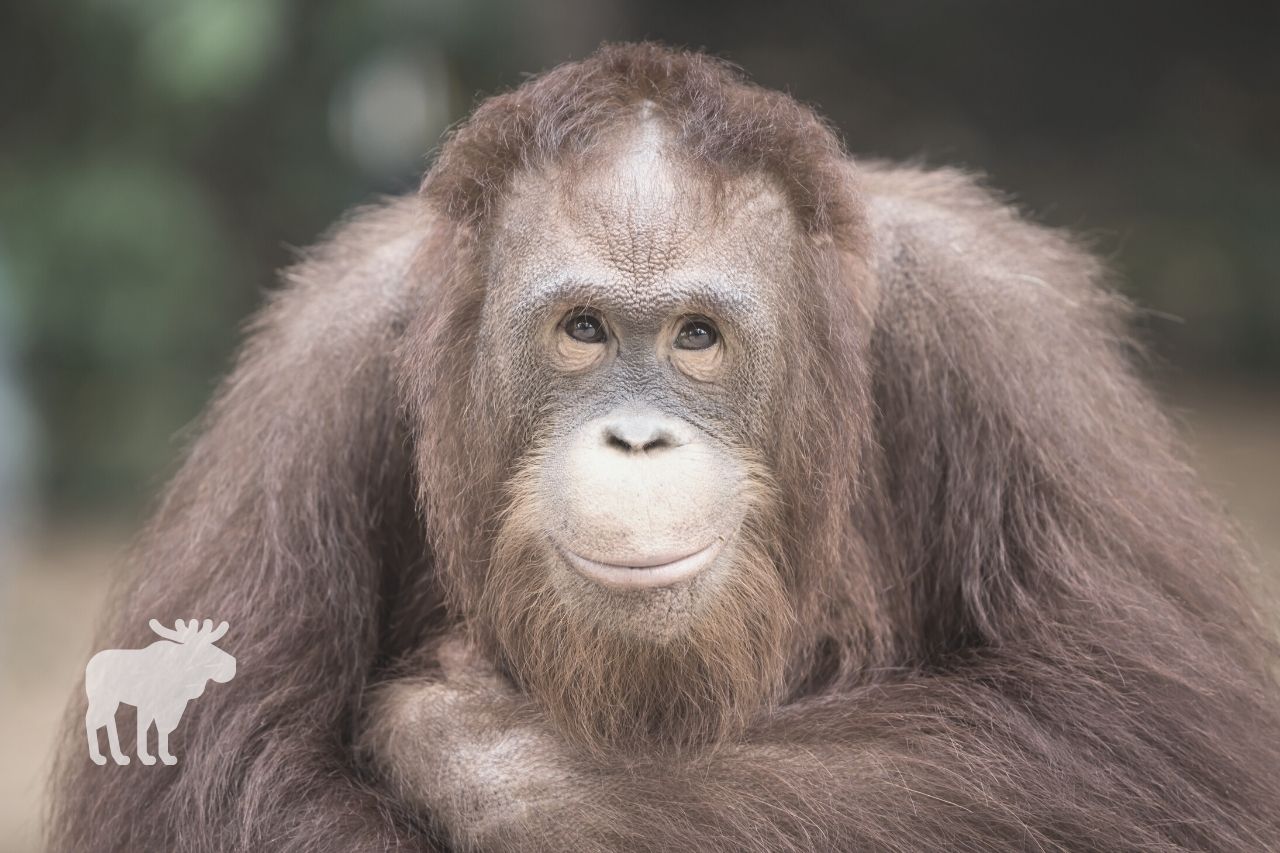People sometimes describe themselves as having a high forehead. But have you ever thought about the forehead size of animals? Believe it or not, there are many species out there that take the definition of “high forehead” to the next level. So, without further ado, let’s talk about some of these animals with big foreheads.
What You'll Learn Today
Animals With Big Foreheads
1. Orangutans

Orangutans are found in some of the rainforests of Asia. Though covered in reddish fur, many of them have bare skin on their faces.
For this reason, they often have the appearance of having very high foreheads, especially when they are young. As they grow older, the cheek pads they develop may diminish the appearance of their foreheads.
Orangutans spend much of their time searching for food. They are incredibly smart creatures who are able to create and use tools, as well as pass learned knowledge onto their young.
2. Beluga Whales

Beluga whales are found in arctic and subarctic regions of the world’s oceans. These smart and adorable mammals have such a prominent forehead that there is actually a name for it: the melon.
Belugas can alter the shape of their melon by breathing in and releasing air through their sinuses. The large globular forehead is used for picking up on vibrations in the water, which can help the whale sense approaching danger or food sources.
Beluga whales can stay underwater for nearly half an hour without coming up for air. They eat a variety of aquatic animals such as water worms, crustaceans, and various types of fish.
Check out this video to learn more about beluga whales:
3. Fish
Speaking of fish, a bunch of species are known for having noticeably large foreheads. These species include the green humphead parrotfish, the Midas cichlid, and the Kamfa.
Green humphead parrotfish can grow up to five feet long, and they are easily recognizable by their drab green color and large, protruding forehead. They live around reefs in the Pacific and Indian Oceans, eating the algae that grows on the coral.
The Midas cichlid, as the name suggests, is golden in color; its large forehead is called a nuchal hump. They are freshwater fish native to North America, and they eat a variety of foods including algae, snails, and small fish.
The Kamfa is a freshwater fish native to Asia that has no scientific name; it was created by interbreeding various other kinds of fish. This fish has a prominent, lumpy forehead and feeds on plant matter, shrimp, and insects as well as other kinds of fish.
4. Monkeys
A few monkey species are also known for their large foreheads. The most notable ones are the bald uakari and the proboscis monkey.
The bald uakari of South America is highly recognizable by its red face which extends toward the top of its head, giving it the appearance of being bald. This monkey is not actually bald; it simply has a very high forehead.
The proboscis monkey is a large, funny-looking monkey from Asia. It has a protruding nose, and its dark, prominent forehead sticks out over its eyes.
5. Elephants

You may not think of elephants as having particularly large foreheads, but that is simply because the rest of their face and head are also large.
These huge mammals from Africa have giant, heavy skulls to support the weight of their tusks, which can weigh up to 400 pounds. This large skull is the reason they have such large foreheads.
In fact, their foreheads comprise nearly 50 percent of surface area on their faces!
6. Gorillas

The gorillas of Africa are some of the largest primates in the world. To that end, they also have large foreheads.
This is especially true of male silverbacks. These dominant males develop various physical traits that help them stand out from the crowd, including tall, pointed foreheads.
Even non-dominant males and females have fairly large foreheads, though. This is due in part to the bare-skinned appearance of their faces.
7. Koalas

Koalas are well-known animals hailing from Australia. Though many people incorrectly refer to them as koala bears, they are actually marsupials.
Koalas have round faces with small eyes and large noses. Their foreheads are not particularly prominent, but they are tall and comprise a large portion of their facial surface area.
Koalas spend most of their time up in eucalyptus trees, eating the leaves. They also sleep for up to 18 hours every day.
8. Chihuahuas

Chihuahuas are some of the smallest dogs out there, measuring less than ten inches long in most cases. You probably wouldn’t think of such small dogs as having large foreheads, but they do.
Chihuahuas have eyes that sit fairly low on their faces, close to the snout. This characteristic makes their foreheads appear large, tall, and rounded.
Chihuahuas were first bred in Mexico but are now a popular domestic breed throughout the world. They are considered some of the most loyal and intelligent dogs you can have.
Conclusion
Though you may not have thought about it before, you can see now that there are quite a few animals in the world that have large foreheads. The beluga whale, the orangutan, the koala, and various fish species are just a few of the animals that boast these prominent foreheads.